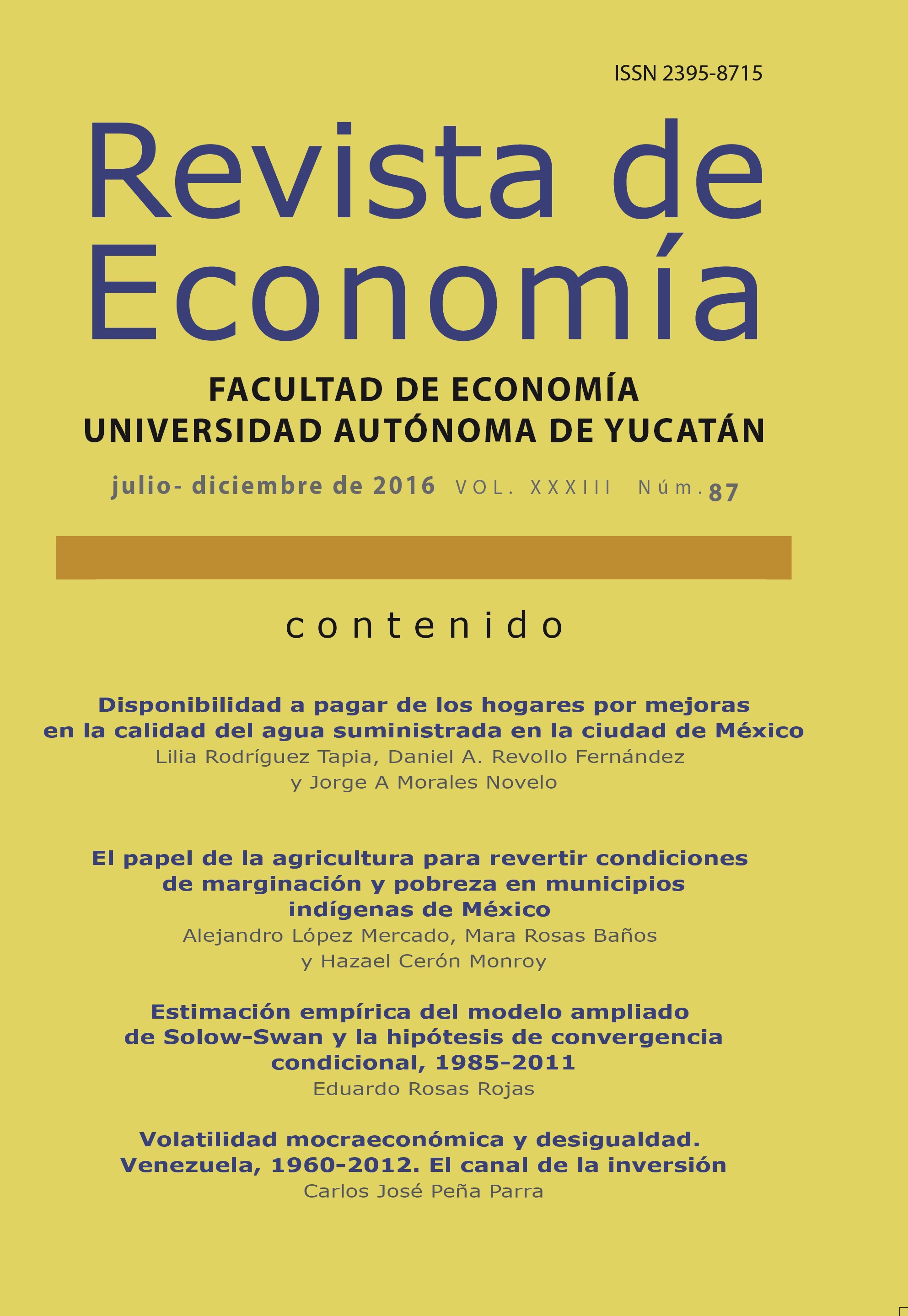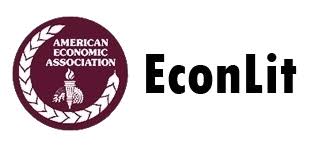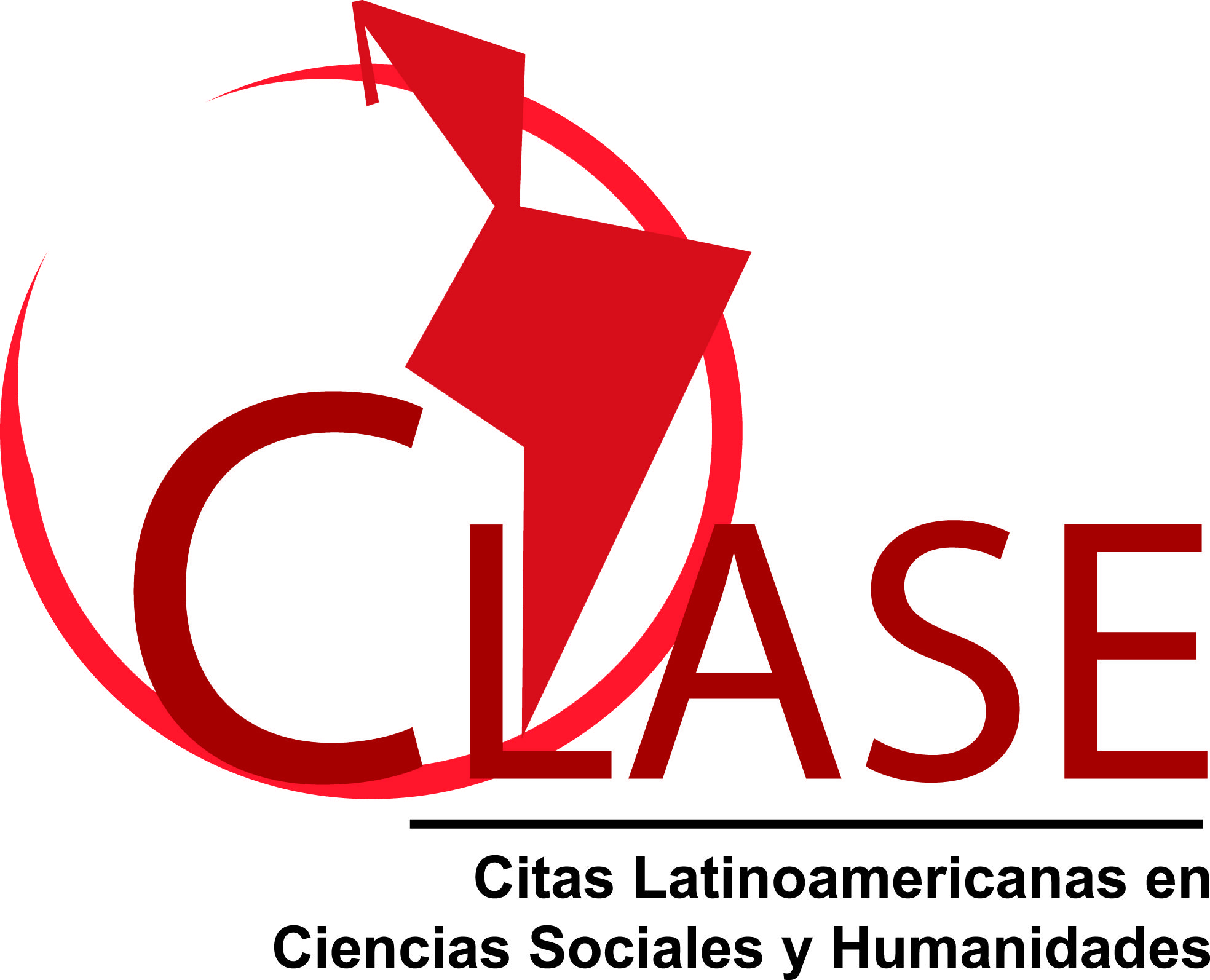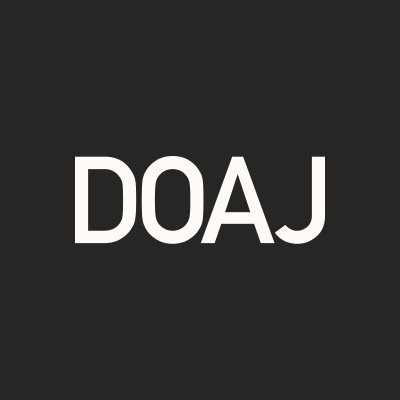Disponibilidad a pagar de los hogares por mejoras en la calidad del agua suministrada en la ciudad de México
Abstract
In Mexico City (CDMX in Spanish) the households are adapting various practices to obtain water of drinkable quality. Some of these practices include buying it bottled; giving it treatment at home through chlorination or boiling; and installing fi lters. Moreover, these behaviors make it clear that the population is demanding an improved quality of the water they are receiving. This fact is verifi ed when estimating the households’ willingness to pay (DAP in Spanish) to improve the water quality in CDMX. Furthermore, water in CDMX is supplied by public urban service called Water Systems of Mexico City (SACMEX in Spanish). Also, it has been found that households are willing to make a bi-monthly payment of - in average - $34 pesos to receive drinkable water from the tap (2.8 $US./TC 12.3 year 2011). This sum represents an 8.7 percent of households’ bi-monthly water payment. It also constitutes a 0.3 percent of its monthly household income. Simultaneously, with the estimation of an econometric model, it is evident that the variable with the greatest impact on the DAP of households is distrust towards SACMEX. In addition, the organoleptic properties of water and type of preventive measures to remedy the low quality of water are also of great impact in the DAP. This research is based on a representative survey of households from CDMX, and on an econometric estimation of a model of willingness to pay. The lack of information on household preferences regarding possible improvements in water services is an important tool for improving public offering safe and reliable supply water systems.
Copyright (c) 2016 Revista de Economía

This work is licensed under a Creative Commons Attribution-NonCommercial-ShareAlike 4.0 International License.
D.R. © Revista de Economía
The conditions that are required when granting the attribution license called CC -BY-NC-SA are the following:
1. The Universidad Autónoma de Yucatán must be clearly identified as the owner of the copyright of the original publication.
2. The material may not be used for commercial purposes.
3. Any derivative work must be published and distributed under the same open access license as the original publication.











